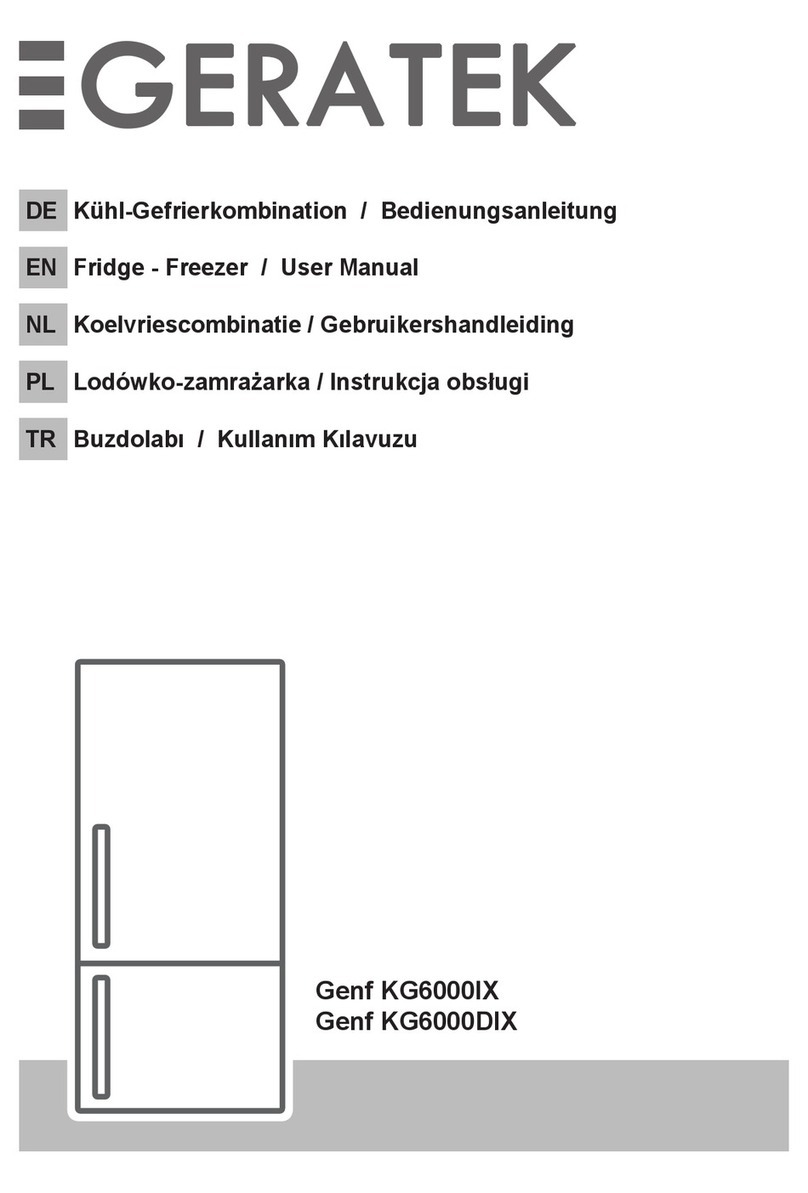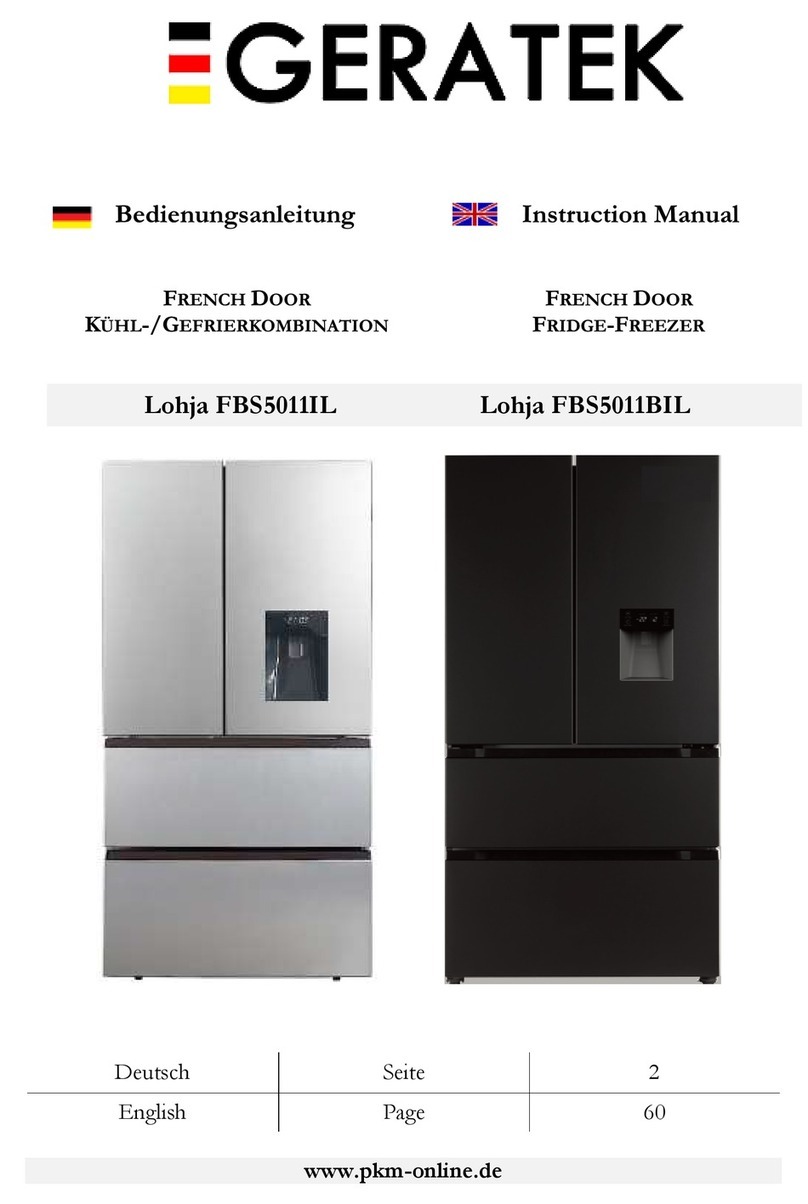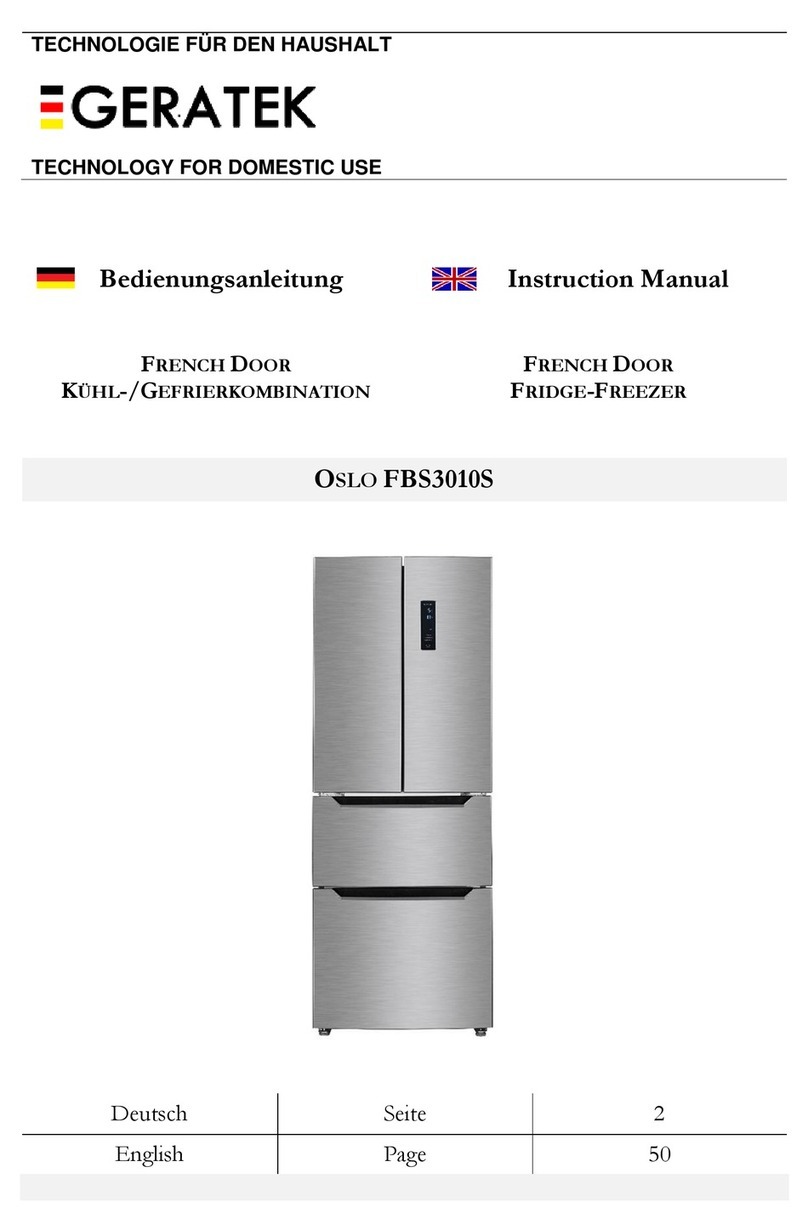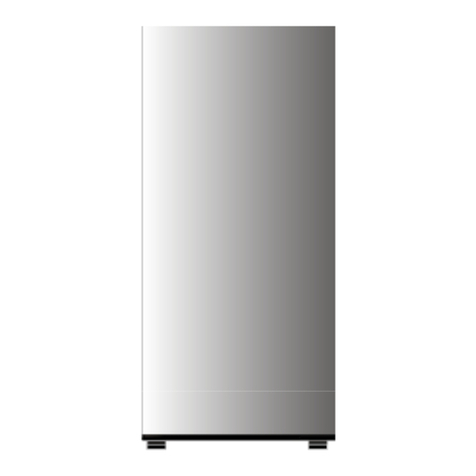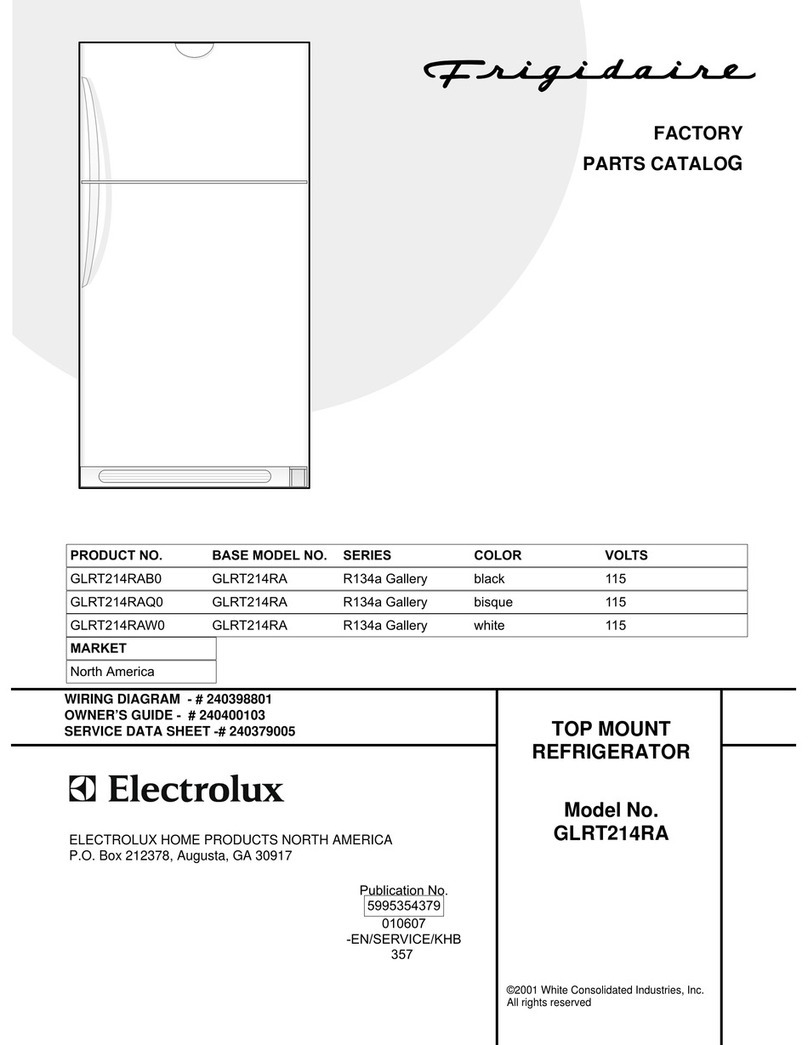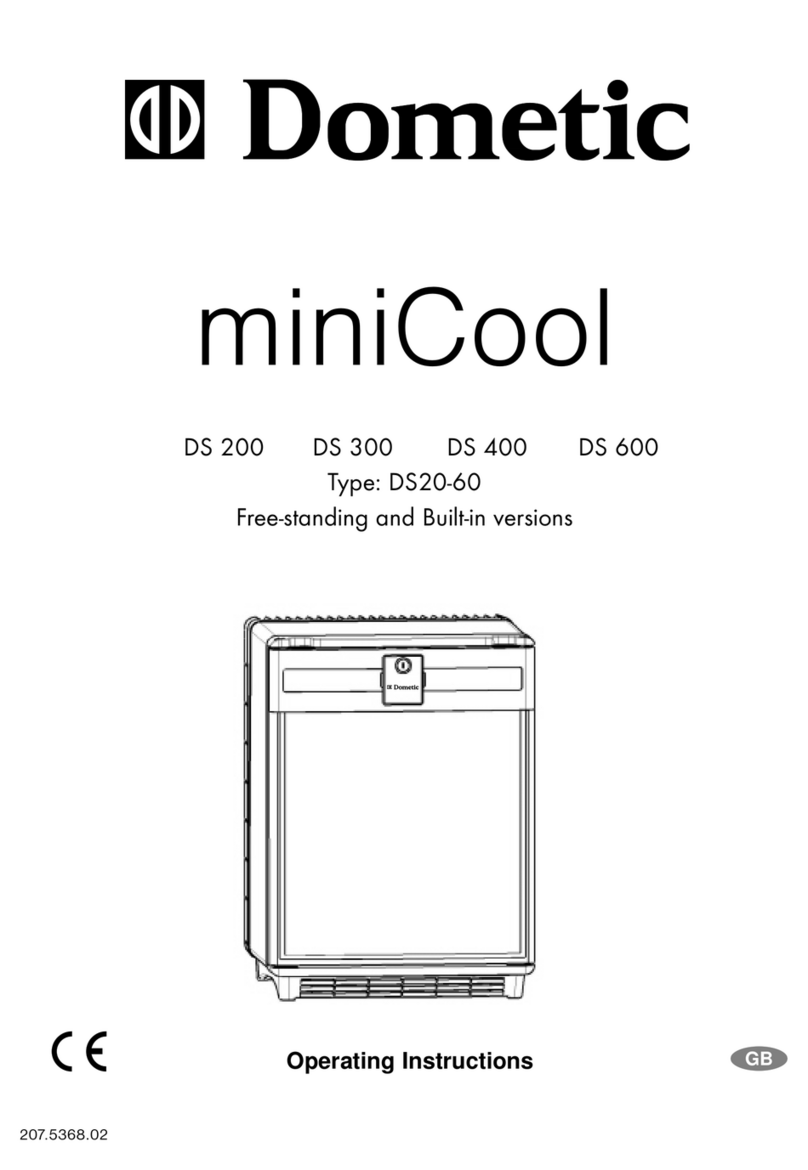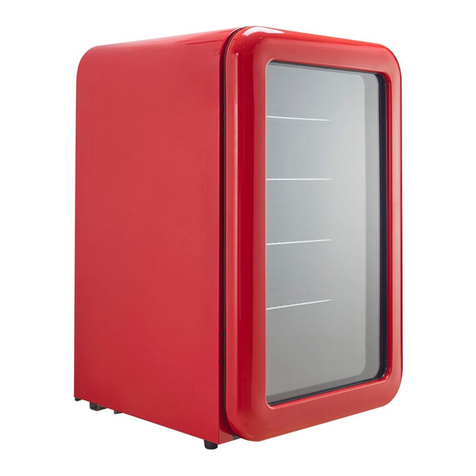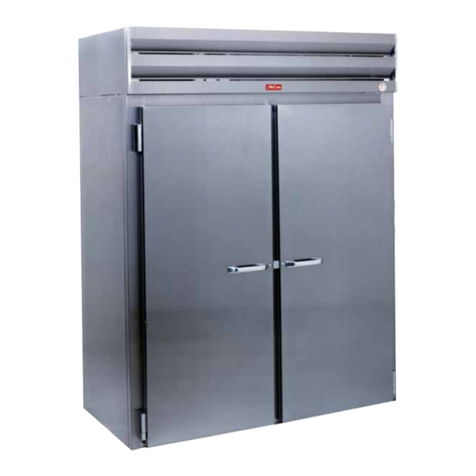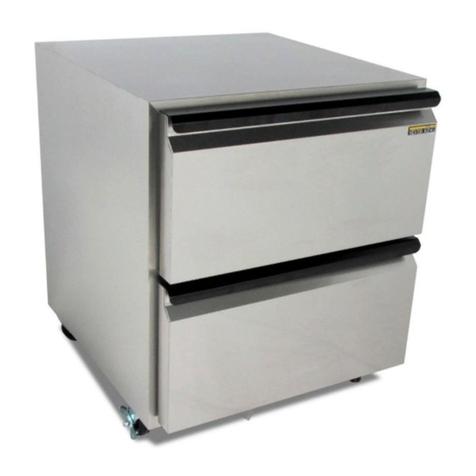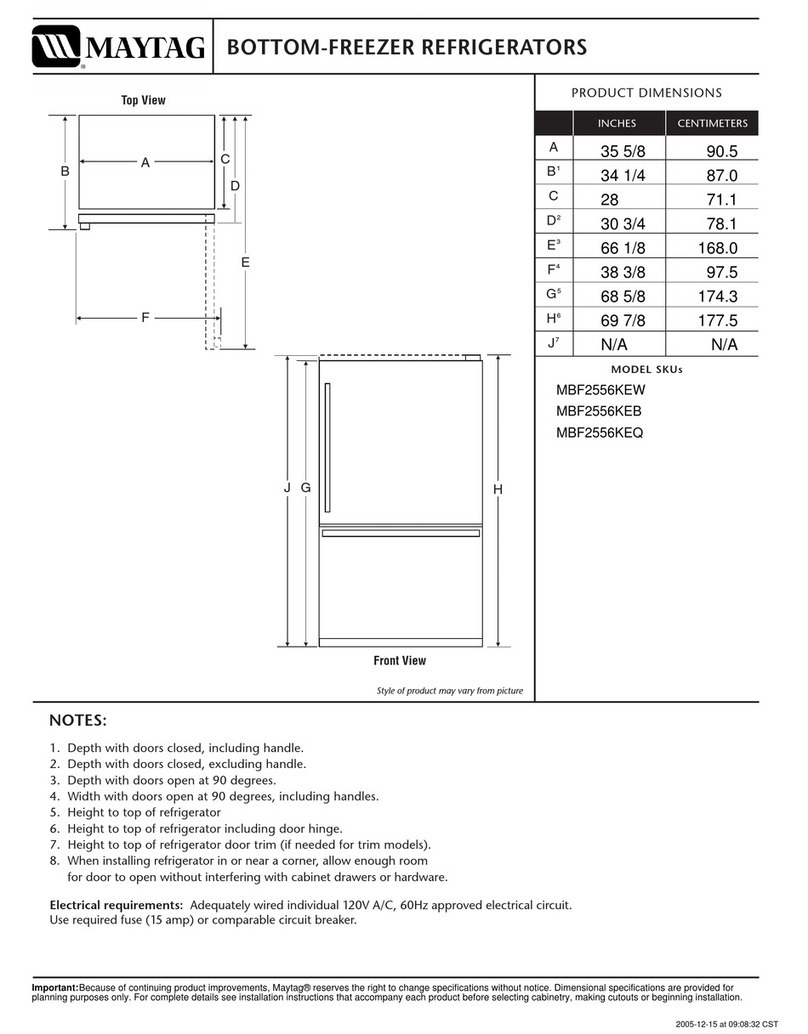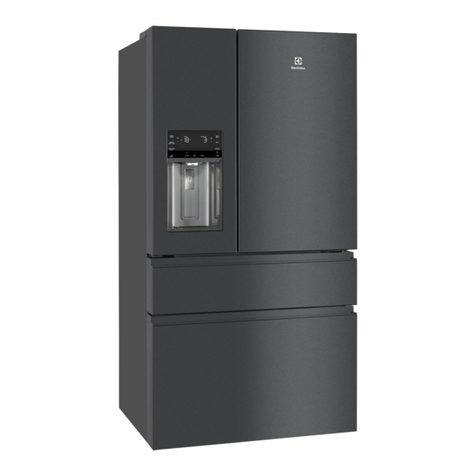GERATEK Barrow KG2500IX User manual


- 2 -
Instruction manual –English
SAFETY INSTRUCTIONS
Before use make sure to read all of the below instructions in
order to avoid injury or damage, and to get the best results
from the appliance. Make sure to keep this manual in a safe
place. If you give or transfer this appliance to someone else
make sure to also include this manual.
In case of damage caused by user failing to follow the
instructions in this manual the warranty will be void. The
manufacturer/importer accepts no liability for damages
caused by failure to follow the manual, a negligent use or use
not in accordance with the requirements of this manual.
1. Read and save these instructions. Attention: pictures in the
instructions are for reference only.
2. This appliance can be used by children aged from 8 years
and above and persons with reduced physical, sensory or
mental capabilities or lack of experience and knowledge if
they have been given supervision or instruction
concerning use of the appliance in a safe way and
understand the hazards involved. Children shall not play
with the appliance. Cleaning and user maintenance shall
not be made by children without supervision.
3. Children aged from 3 to 8 years are allowed to load and
unload refrigerating appliances.
4. If the supply cord is damaged, it must be replaced by the
manufacturer, its service agent or similarly qualified
persons in order to avoid a hazard.
5. WARNING: Keep ventilation openings, in the appliance
enclosure or in the built-in structure, clear of obstruction.
6. WARNING: Do not use mechanical devices or other means
to accelerate the defrosting process, other than those
recommended by the manufacturer.
7. WARNING: Do not damage the refrigerant circuit.
8. WARNING: Do not use electrical appliances inside the food
storage compartments of the appliance, unless they are of
the type recommended by the manufacturer.

- 3 -
9. Do not store explosive substances such as aerosol cans
with a flammable propellant in this appliance.
10. This appliance is intended to be used in household and
similar applications such as
-staff kitchen areas in shops, offices and other working
environments;
-farm houses and by clients in hotels, motels and other
residential type environments;
-bed and breakfast type environments;
-catering and similar non-retail applications.
11. WARNING: When positioning the appliance, ensure the
supply cord is not trapped or damaged.
12. WARNING: Do not locate multiple portable socket-outlets
or portable power supplies at the rear of the appliance.
13. To avoid contamination of food, please respect the
following instructions:
-Opening the door for long periods can cause a significant
increase of the temperature in the compartments
of the appliance.
-Clean regularly surfaces that can come in contact with
food and accessible drainage systems.
-Clean water tanks if they have not been used for 48h;
flush the water system connected to a water supply if
water has not been drawn for 5 days. (Only applicable to
water dispenser and water inlet system)
-Store raw meat and fish in suitable containers in the
refrigerator, so that it is not in contact with or drip onto
other food.
-Two-star frozen-food compartments are suitable for
storing pre-frozen food, storing or making ice cream and
making ice cubes.
-One-, two- and three-star compartments are not
suitable for the freezing of fresh food.
-If the refrigerating appliance is left empty for long
periods, switch off, defrost, clean, dry, and leave the
door open to prevent mould developing within the
appliance.
14. This refrigerating appliance is not intended to be used as a
built-in appliance.

- 4 -
15. Climate class:
-Extended temperate (SN): 'this refrigerating appliance is
intended to be used at ambient temperatures ranging
from 10°C to 32 °C';
-Temperate(N): 'this refrigerating appliance is intended to
be used at ambient temperatures ranging from 16 °C to
32 °C';
-Subtropical (ST): 'this refrigerating appliance is intended
to be used at ambient temperatures ranging from 16 °C
to 38 °C';
-Tropical(T): 'this refrigerating appliance is intended to be
used at ambient temperatures ranging from 16 °C to
43 °C'.
16. Unplug the appliance from outlet when not in use, before
putting on or taking off parts, before cleaning.
17. Insert the plug into a single grounded socket.
18. Never use the appliance in place where combustible and
inflammable materials are kept.
19. The appliance must be positioned so that the plug is
accessible.
20. Please follow the local regulations regarding disposal of the
appliance for its flammable blowing gas. Before you scrap
the appliance, please take off the doors to prevent children
trapped.
21. To clean the appliance, use only mild detergents or glass
cleaning products. Never use harsh detergents or solvents.
22. It is not recommended to use this refrigerator with an
extension cord or power board. Please ensure that the
appliance is plugged directly into the electrical outlet.
23. Do not place hot food or drink into the refrigerator before
it cools down to room temperature.
24. Close the door immediately after putting in any items so
the inside temperature will not rise dramatically.
25. Keep appliance away from any heat source or direct
sunlight.

- 5 -
26. To fix stably, the appliance must be placed on a flat and
solid surface. It should not be laid on any soft material.
27. Do not place any other appliance on top of the refrigerator,
and do not wet it.
28. Do not use outdoors or in wet conditions.
29. Never pull the cord to disconnect it from the outlet. Grasp
the plug and pull it from the outlet.
30. Keep the cord away from heated surfaces.
31. Check that the voltage of the power supply in your home is
the same as the voltage shown on the rating label of this
product.
32. Children should be supervised to ensure that they do not
play with the appliance.
33. The appliance is not intended to be operated by means of
an external timer or a separate remote-control system.
34. This appliance has been incorporated with a grounded plug.
Please ensure the wall outlet in your house is well earthed.
35. It is recommended to check regularly the supply cord for
any sign of possible deterioration, and the appliance
should not be used if the cable is damaged.
36. Do not remove nor touch items from the freezer
compartment if your hands are damp/wet, as this could
cause skin abrasions or frost/freezer burns.
37. Do not place carbonated of fizzy drinks in the freezer
compartment as it creates pressure on the container,
which may cause it to explode, resulting in damage to the
appliance.
38. Ice lollies can cause frost burns if consumed straight from
the appliance.
39. You must not operate the appliance without the lamp.
Warning! The light bulb supplied with this appliance is a
“special use lamp bulb” usable only with the appliance
supplied. This “special use lamp” is not usable for domestic
lighting.

- 6 -
40. WARNING!
Risk
of fire / flammable
materials
41. The coolant circuit of this unit contains the refrigerant
isobutane (R600a), a natural gas that is flammable and of
high environmental compatibility. Make sure no parts of
the coolant circuit get damaged during transport and
installation of the appliance.
If the coolant circuit is damaged:
•avoid any open flames or ignition source;
•disconnect the plug;
•thoroughly air the room in which the appliance is
installed and contact an authorized technician.
42. Regarding the information pertaining to the installation,
handling, use, servicing, replacement of lamp (if applicable),
cleaning and disposal of the appliance, thanks to refer to
the below paragraph of the manual.

- 7 -
Barrow KG2500IX EN
STRUCTURE ILLUSTRATION
A. Fridge compartment
1. Fridge temperature setting knob
2. Glass shelves
3. Salad crisper
4. Door racks
5. Freezer temperature setting slider (You can see this slider after removing the salad crisper.)
B. Freezer compartment
6. Tray
7. Drawers
Note: The glass shelves and the crisper can be removed for cleaning and inserted for storing food.
TRANSPORT AND HANDLING
During transportation, hold the base and lift the refrigerator carefully with an angle inferior at 45 degrees.
Never place it upside down nor horizontally. Push refrigerator on its basis and place it using the roller feet.
INSTALLATION
This refrigerating appliance is not intended to be used as a built-in appliance.
To fix stably, the appliance must be placed on a flat and solid surface. It should not be laid on any soft material.
Choose a location where there is no heat source. Keep the refrigerator away from direct sunlight or other
appliances producing heat.
Choose a dry and well-ventilated place where there is no corrosive air.

- 8 -
In order to improve efficiency of the cooling system and save energy, it is necessary to maintain good ventilation
around the appliance for the dissipation of heat. For this reason, sufficient clear space should be available around
the refrigerator.
Levelling the unit
To do this adjust the two levelling feet at front of the unit. If the unit is not level, the doors and magnetic seal
alignments will not be covered properly.
FIRST USE
Before the use of the refrigerator, remove all the packages.
Adjust the feet and clear the outside and inside of the refrigerator with a warm cloth.
Do not start the refrigerator immediately after vertical placement. Only start it after 4 hours standing to ensure
its proper operation.
To prevent damage to the power cord and any consequential incidents, the power cord should not be covered
by the refrigerator or other objects. Before switching on the refrigerator, please check the voltage range of the
refrigerator carefully if the same as that of the power supply.
When the refrigerator is first installed, allow it to stabilize at normal operating temperatures for 2-3 hours prior
to filling it with fresh or frozen foods.
If operation is interrupted, wait for 5 minutes before restarting.
Clean the parts of the refrigerator with lukewarm water on a soft cloth or with a neutral detergent and with
clear water, then wipe them dry.
Notes: Electric parts of the refrigerator can only be wiped by dry cloth.
A
550
B
585
C
1800
D
Min=50
E
Min=50
F
Min=50
G
Max=1100
H
1135
L
135°

- 9 -
TEMPERATURE CONTROL
1. Temperature setting of the fridge compartment
The fridge temperature setting knob
•The knob in the fridge compartment is used to adjust the temperature of the fridge compartment.
•The internal temperature is controlled by a sensor. There are 4 settings: OFF, COLD, COLDER and
COLDEST. COLD is the warmest setting and COLDEST is the coldest setting.
•The appliance may not operate at the correct temperature if it is in a particularly hot environment or if
you open the door frequently.
•Neither fridge, nor freezer compartment work when the setting is OFF.
2. Temperature setting of the freezer compartment
The freezer temperature setting slider
•This slider in the fridge compartment is used to adjust the temperature of the freezer compartment.
•When the slider is moved toward position A, the temperature in the freezer compartment will be higher.
When the slider is moved toward position C, the temperature in the freezer compartment will be lower.
•Middle position B is recommended for normal use.
•To get the lowest temperature in the freezer compartment, you can adjust the setting knob at COLDEST
and position the slider at C.

- 10 -
Temperature setting recommendation
Environment
temperature
Freezer compartment
Fridge compartment
Summer
Set on
Set on COLDER ~COLDEST
Normal
Set on
Set on COLDER
Winter
Set on
Set on COLDER ~COLDEST
•In winter or temperature close to 16℃, users should avoid setting on and COLD.
•For energy saving, the setting and COLDEST only apply to special need (such as quick-freezing or ice
making), and need turn back after special need.
Note: the temperature will impact the storage time of food. Set the temperature as necessary. Warmer will
accelerate food spoilage and colder will freeze food bad. Thus, food to be wasted.

- 11 -
STORAGE OF FOOD
Your appliance comes with the accessories outlined in the “Structure illustration” on page 7. These parts help
you to properly store your food. The glass shelves and crisper can be removed to store food if needed.
Note: Food should not directly touch any surface inside the appliance. It has to be wrapped or packed separately
in appropriate packaging material.
Storing food in the refrigerator compartment
The fridge compartment helps to extend the storage times of fresh perishable foods.
Fresh food care for best results:
•Store foods that are very fresh and of good quality.
•Ensure that food is well wrapped or covered before it is stored. This will prevent food from dehydrating,
deteriorating in colour or losing taste and will help maintain freshness. It will also prevent odour transfer.
Vegetables and fruit do not need to be wrapped if they are stored in the vegetable container of the fridge
compartment.
•Make sure that strong smelling foods are wrapped or covered and stored away from foods such as butter,
milk and cream which can be tainted by strong odors.
•Allow hot foods to cool down before placing them in the fridge compartment.
Dairy foods and eggs
•Most pre-packed dairy foods have a recommended ‘use by /best before/best by/’date stamped on them.
Store them in the fridge compartment and use within the recommended time.
•Butter can become tainted by strong smelling foods so it is best stored in a sealed container.
•Eggs should be stored in the fridge compartment.
Red meat
•Place fresh red meat on a plate and loosely cover with waxed paper, plastic wrap or foil.
•Store cooked and raw meat on separate plates. This will prevent any juice lost from the raw meat from
contaminating the cooked product.
Poultry
•Fresh whole birds should be rinsed inside and out with cold running water, dried and placed on a plate.
Cover loosely with plastic wrap or foil.
•Poultry pieces should also be stored this way. Whole poultry should never be stuffed until just before
cooking, otherwise food poisoning may result.
Fish and seafood
•Whole fish and fillets should be used on the day of purchase. Until required, refrigerate on a plate loosely
covered with plastic wrap, waxed paper or foil.
•If storing overnight or longer, take particular care to select very fresh fish. Whole fish should be rinsed in
cold water to remove loose scales and dirt and then patted dry with paper towels. Place whole fish or fillets
in a sealed plastic bag.
•Keep shellfish chilled at all times. Use within 1-2 days.
Precooked foods and leftovers
•These should be stored in suitable covered containers so that the food will not dry out.
•Keep for only 1-2 days.
•Reheat leftovers only once and until steaming hot.
Freezing and storing food in the freezer compartment
•To store deep-frozen food.
•To make ice cubes.
•To freeze food.
Note: Ensure that the freezer compartment door has been closed properly.

- 12 -
Purchasing frozen food
•Packaging must not be damaged.
•Use by the 'use by /best before/best by/' date.
•If possible, transport deep-frozen food in an insulated bag and place quickly in the freezer compartment.
Freezing fresh food
Freeze fresh and undamaged food only.
To retain the best possible nutritional value, flavour and colour, vegetables should be blanched before freezing.
Aubergines, peppers, zucchini and asparagus do not require blanching.
Note: Keep food to be frozen away from food which is already frozen.
•The following foods are suitable for freezing:
Cakes and pastries, fish and seafood, meat, game, poultry, vegetables, fruit, herbs, eggs without shells, dairy
products such as cheese and butter, ready meals and leftovers such as soups, stews, cooked meat and fish,
potato dishes, soufflés and desserts.
•The following foods are not suitable for freezing:
Types of vegetables, which are usually consumed raw, such as lettuce or radishes. Eggs in shells, grapes, whole
apples, pears and peaches, hard-boiled eggs, yoghurt, soured milk, sour cream, and mayonnaise.
The maximum amount of food that can be frozen in 24 hours is specified on the rating plate.
The freezing process lasts 24 hours: during this period do not add other food to be frozen.
Packing frozen food
To prevent food from losing its flavour or drying out, place food in airtight packaging.
1. Place food in packaging.
2. Remove air.
3. Seal the wrapping.
4. Label packaging with contents and date of freezing.
Suitable packaging:
Plastic film, tubular film made of polyethylene, aluminum foil. These products are available from specialist
outlets.
Never forget:
•When you freeze fresh foods with a 'use by /best before/best by/' date, you must freeze them
before this date expires.
•Check that the food was not already frozen. Frozen food that has thawed must not be re-frozen.
•Once defrosted, food should be consumed quickly.
Position different food in different compartments according to below table:
Compartments
Type of food
Door racks of fridge compartment
•Foods with natural preservatives, such as jams, juices,
drinks, condiments.
•Do not store perishable foods.
Crisper drawer (salad drawer)
•Fruits, herbs and vegetables should be placed separately
in the crisper bin.
•Do not store bananas, onions, potatoes, garlic in the
refrigerator.
Fridge shelf - middle
•Dairy products, eggs
Fridge shelf - top
•Foods that do not need cooking, such as ready-to-eat
foods, deli meats, leftovers.
Freezer drawer(s) / tray
•Foods for long-term storage.
•Bottom drawer for raw meat, poultry, fish.
•Middle drawer for frozen vegetable, chips.
•Top tray for ice cream, frozen fruit, frozen baked goods.

- 13 -
Door open alarm
If the fridge door is left open for more than 90 seconds, the LED light will flash 3 times and then light for 5
seconds, repeating this cycle until the door is closed.
HELPFUL HINTS AND TIPS
We recommend that you follow the tips below to save energy.
•Try to avoid keeping the door open for long periods in order to conserve energy.
•Ensure the appliance is away from any sources of heat (Direct sunlight, electric oven or cooker etc.)
•Don't set the temperature colder than necessary.
•Don't store warm food or evaporating liquid in the appliance.
•Place the appliance in a well ventilated, humidity-free room.
•The “STRUCTURE ILLUSTRATION” shows the correct combination for the drawers, crisper and shelves, do
not adjust the combination as this is designed to be the most energy efficient configuration.
Hints for fresh food refrigeration
•Do not place hot food directly into the refrigerator or freezer, the internal temperature will increase
resulting in the compressor having to work harder and will consume more energy.
•Do cover or wrap the food, particularly if it has a strong flavor.
•Place food properly so that air can circulate freely around it.
Hints for refrigerator
•Meat (All Types) - Wrap in polythene food wrap and place on the glass shelf above the vegetable drawer.
Always follow food storage times and use by dates suggested by manufacturers.
•Cooked food, cold dishes, etc.: They should be covered and may be placed on any shelf.
•Fruit and vegetables: They should be stored in the special drawer provided.
•Butter and cheese: Should be wrapped in airtight foil or plastic film wrap.
•Milk bottles: Should have a lid and be stored in the door racks.
Hints for freezing
•When first starting-up or after a period out of use, let the appliance run at least 2 hours on the higher settings
before putting food in the compartment.
Important! In the event of accidental defrosting, for example when the power has been off for longer than
the temperature rising time shown in the rating plate, the defrosted food must be consumed quickly or
cooked immediately and then re-frozen (after cooked).
•Prepare food in small portions to enable it to be rapidly and completely frozen and to make it possible to
subsequently thaw only the quantity required.
•Wrap up the food in aluminum foil or polyethylene food wraps which are airtight.
•Do not allow fresh, unfrozen food to touch the food which is already frozen to avoid temperature rise of the
latter.
•Iced products, if consumed immediately after removal from the freezer compartment, might cause frost
burns to the skin.
•It is recommended to label and date each frozen package in order to keep track of the storage time.
Hints for the storage of frozen food
•Ensure that frozen food has been stored correctly by the food retailer.
•Once defrosted, food will deteriorate rapidly and should not be re-frozen. Do not exceed the storage period
indicated by the food manufacturer.
Switching off your appliance
If the appliance needs to be switched off for an extended period, the following steps should be taken to prevent
mould on the appliance.
1. Remove all food;
2. Remove the power plug from the mains socket;
3. Clean and dry the interior thoroughly;
4. Ensure that all the doors are wedged open slightly to allow air to circulate.

- 14 -
CLEANING AND CARE
For hygienic reasons the appliance (including exterior and interior accessories) should be cleaned regularly.
WARNING: The appliance must not be connected to the mains during cleaning to prevent any chance of
electrical shock. Before cleaning, switch the appliance off and remove the plug from the mains socket.
Exterior cleaning
•To maintain good appearance of your appliance, you should clean it regularly.
•Spray water onto the cleaning cloth instead of spraying directly on the surface of the appliance. This helps
ensure an even distribution of moisture to the surface.
•Clean the doors and cabinet surfaces with a mild detergent and wipe dry using a soft cloth.
Caution!
Do not use sharp objects as they are likely to scratch the surface. Do not use thinner, car detergent, Clorox,
ethereal oil, abrasive cleansers or organic solvent such as benzene for cleaning. They may damage the surface
of the appliance and may cause fire.
Interior cleaning
You should clean the appliance interior regularly. It will be easier to clean when food stocks are low. Wipe the
inside of the fridge/freezer with a weak solution of bicarbonate of soda, and then rinse with warm water using
a wrung-out sponge or cloth. Wipe completely dry before replacing the shelves and baskets. Thoroughly dry all
surfaces and removable parts.
Caution!
Do not use sharp objects to remove frost from the freezer. Only after the interior completely dry should the
appliance be switched back on and plugged back into the mains socket.
Door seals cleaning
Take care to keep door seals clean. Sticky food and drinks can cause seals to stick to the cabinet and tear when
you open the door. Wash seal with a mild detergent and warm water. Rinse and dry it thoroughly after cleaning.
Caution! Only after the door seals are completely dry should the appliance be powered on.
Defrosting:
This appliance defrosts automatically. No manual operation is needed.
CHANGING THE LAMP
The LED lamp is used by the refrigerator for lighting, which features low energy consumption and long service
life. In case of any abnormality, please contact the after-sales personnel for visiting service. The LED lamps can
only be replaced by the after-sales personnel.
DOOR REVERSE
Users can change the direction of opening according to one's own needs. The operating sequence is as follows:
(The pictures below are for the guideline to reverse the door. The appearance of the appliance may be different
from the product you purchased.)
Before reversing the door, please be prepared below tools and material: straight screwdriver, cross screwdriver,
spanner and the components included in the accessory bag:
Left door hinge cover x 1 Left aid-closer on upper door x 1 Left aid-closer on lower door x 1

- 15 -
1. Unscrew the top hinge cover and then unscrew the top hinge. Lift the upper door and place it on a soft pad
to avoid scratch and damage.
2. Remove the top left hinge cover.
3. Take off the upper door, take out the screw from the middle hinge by the cross screwdriver, and then take
off the lower door.

- 16 -
4. Lay down the appliance, take out the adjusting foot, and then take off the lower hinge by the cross
screwdriver.
5. Adjust the hinge core position of the lower hinge and upper hinge to the opposite position.
6. Install the lower hinge to the appliance like below, screwing in the adjusting foot horizontally.
7. Detach the fridge and freezer door gaskets and then attach them after rotating.

- 17 -
8. Remove the original aid-closers from the upper and lower door, and then install the aid-closers (from the
accessory bag) to the opposite side.
9. Install the lower door, adjust and fix the middle hinge onto the cabinet.
10. Place the upper door back on. Ensure the door is aligned horizontally and vertically so that the seal is closed
on all sides before finally tightening the top hinge. Insert the top hinge and screw it to the top of the unit
and then fix the hinge cover (from the accessory bag) by the screw.
11. Fix the hinge cover.

- 18 -
TECHNICAL SPECIFICATIONS
Rated voltage:
220-240V~
Rated current:
0.9A
Rated frequency:
50Hz
Lamp power:
1W
Climate class:
N/ST
Refrigerant:
R600a(37g)
Protection against electrical shock:
I
Insulation blowing gas:
CYCLOPENTANE
Climate class:
-Extended temperate (SN): 'this refrigerating appliance is intended to be used at ambient temperatures
ranging from 10°C to 32 °C';
-Temperate(N): 'this refrigerating appliance is intended to be used at ambient temperatures ranging from
16 °C to 32 °C';
-Subtropical (ST): 'this refrigerating appliance is intended to be used at ambient temperatures ranging from
16 °C to 38 °C';
-Tropical(T): 'this refrigerating appliance is intended to be used at ambient temperatures ranging from 16 °C
to 43 °C';
Note: More data information, please scan the QR code on the energy label.
TROUBLESHOOTING
Case
Inspection
Solutions
Completely
non-
refrigeration
1. Is the device plugged in?
2. Are any breakers and/or fuses broken?
3. No electricity or line trip?
4. Where is the refrigerator installed? Is it
placed in balconies, garages, storage
rooms and other places where the
ambient temperature is below 10℃?
1. Re-plug
2. Open the door and check whether the
lamp is lit.
3. Power outage or line tripping?
4. Install the refrigerator in a location that
is protected and the ambient
temperature is above 10 ℃.
If your refrigerator is installed in too low
temperature, the internal cooling system
may not work correctly.
Abnormal
noise
1. Is the refrigerator placed on a stable
surface?
2. Does the refrigerator touch the wall?
1. Adjust the refrigerator's adjustable feet.
2. Move it off the wall.
Poor
refrigerating
efficiency
1. Did you put hot food or too much
food?
2. Do you open the door frequently?
Do you clip a food bag to the seal of
the door?
3. Direct sunlight or near a furnace or
stove?
4. Is it well-ventilated?
5. Temperature setting is too high?
1. Cool down food before placing it in the
refrigerator.
2. Check and close the door.
3. Remove the refrigerator from the heat
source.
4. Maintain distance to the wall to maintain
good ventilation.
5. Setting to the appropriate temperature.
Peculiar
smell in
refrigerator
1. Any spoiled food?
2. Do you need to clean refrigerator?
3. Did you store food with strong flavors?
1. Throw away spoiled food.
2. Clean the refrigerator.
3. Pack food of strong flavors airtight.
Note: If the above descriptions are inapplicable to troubleshooting, do not disassemble and repair it yourself.
Repairs carried out by inexperienced persons may cause injury or serious malfunctioning. This product should
be serviced by an authorized engineer and only genuine spare parts should be used.

- 19 -
The following symptoms are not breakdowns:
•The noise of the cooling liquid which circulates in pipes can be heard, it is normal.
•The humidity on the surface outside of the device during the wet seasons is not a problem of the device;
you just need to wipe it with a dry soft cloth.
•The compressor and the condenser can warm more during the periods of strong heat.
•The frame of the door is a bit hot; it means that the condenser works to evacuate the humidity of air.
GUARANTEE AND CUSTOMER SERVICE
Before delivery our devices are subjected to rigorous quality control. If, despite all care, damage has occurred
during production or transportation, please return the device to your dealer. In addition to statutory legal rights,
the purchaser has an option to claim under the terms of the following guarantee:
For the purchased device we provide 2 years guarantee, commencing from the day of sale. If you have a
defective product, you can directly go back to the point of purchase.
Defects which arise due to improper handling of the device and malfunctions due to interventions and repairs
by third parties or the fitting of non-original parts are not covered by this guarantee. Always keep your receipt,
without the receipt you can’t claim any form of warranty. Damage caused by not following the instruction
manual, will lead to a void of warranty, if this results in consequential damages then we will not be liable. Neither
can we hold responsible for material damage or personal injury caused by improper use or if the instruction
manual is not properly executed. Damage to accessories does not mean free replacement of the whole appliance.
In such case, please contact our service department. Broken glass or breakage of plastic parts is always subject
to a charge. Defects to consumables or parts subjected to wearing, as well as cleaning, maintenance or the
replacement of said parts are not covered by the warranty and are to be paid.
The guarantee period of the spare parts is 2 years. If you need replacement, please contact our customer service.
ENVIRONMENT FRIENDLY DISPOSAL
Recycling –European Directive 2012/19/EU
This marking indicates that this product should not be disposed with other household wastes. To
prevent possible harm to the environment or human health from uncontrolled waste disposal, recycle
it responsibly to promote the sustainable reuse of material resources. To return your used device,
please use the return and collection systems or contact the retailer where the product was purchased. They can
take this product for environmental safe recycling.
For professional repair and ordering spare parts, please contact our customer service.
Emerio B.V. Customer service: Kundeninformation: Klantenservice:
Oudeweg 115 T: +31 (0) 23 3034369 T: +49 (0) 3222 1097 600 T: +31 (0) 23 3034369
2031 CC Haarlem www.emerio.eu/service www.emerio.eu/service www.emerio.eu/service
The Netherlands
Looking for spare parts? Have a look at www.spareparts.emerio.eu
Sie brauchen Ersatzteile? Besuchen Sie www.ersatzteile.emerio.eu
Onderdelen nodig? Kijk op www.onderdelen.emerio.eu
Table of contents
Languages:
Other GERATEK Refrigerator manuals
Popular Refrigerator manuals by other brands

Thermador
Thermador T24UC920DS installation guide

Avanti
Avanti REFRIDGERATOR-FREEZER RA3100WT instruction manual

Dometic
Dometic RM 8400 installation instructions
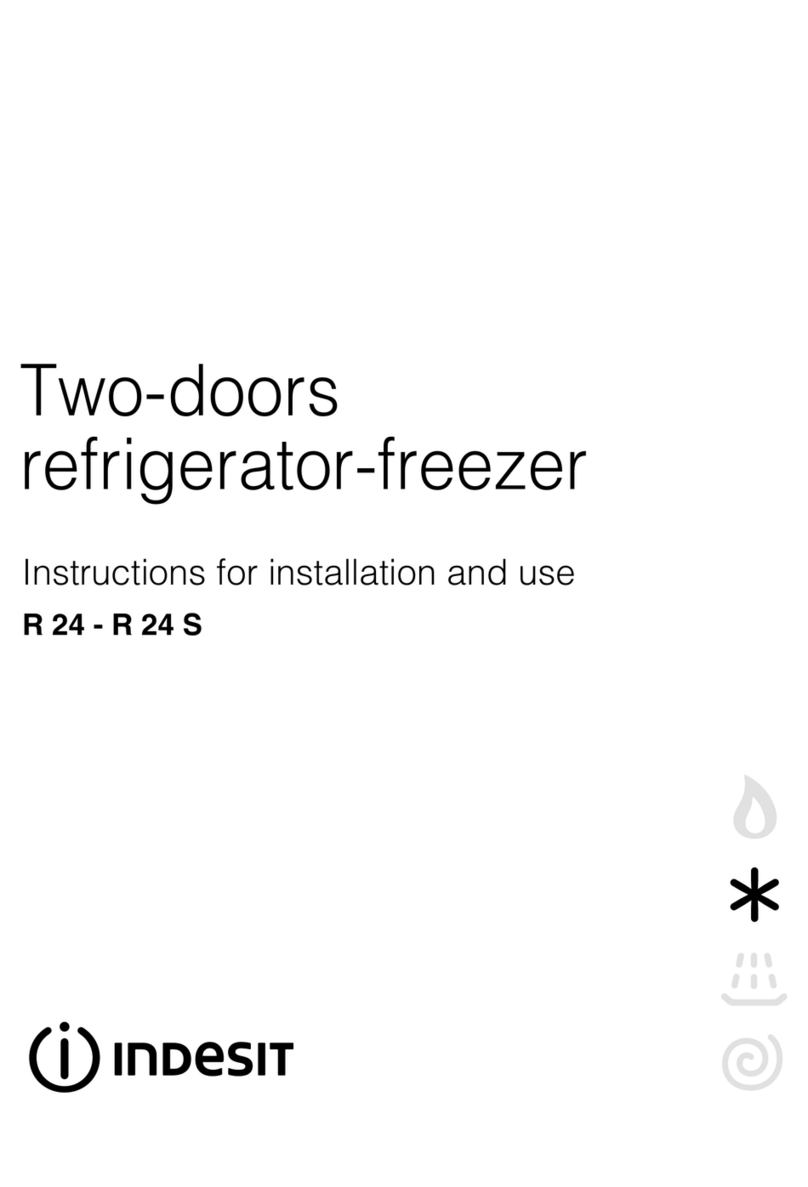
Indesit
Indesit R 24 - R 24 S Instructions for installation and use
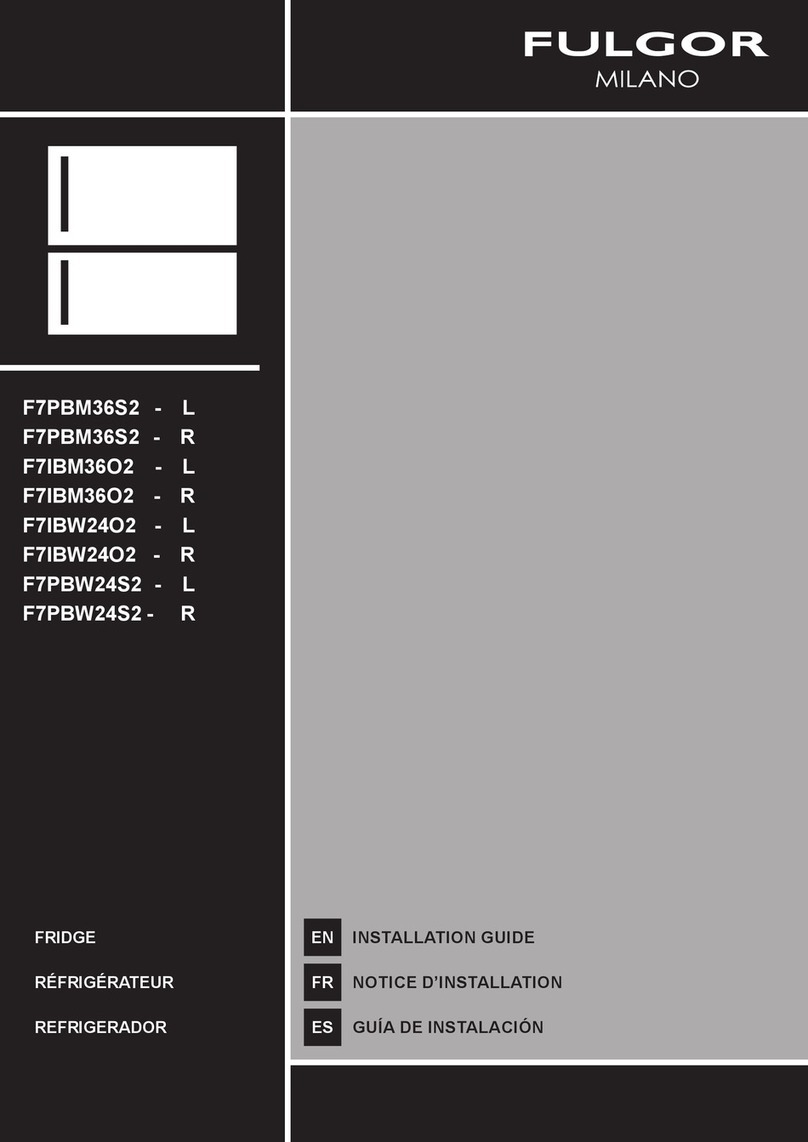
Fulgor Milano
Fulgor Milano F7PBM36S2-L installation guide
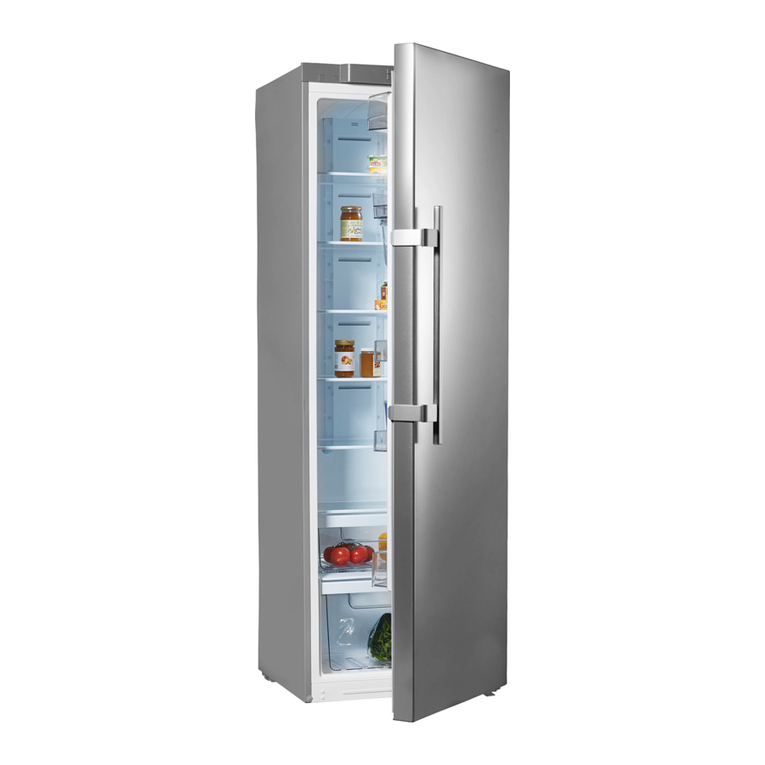
Hanseatic
Hanseatic HKS18560EI user manual



